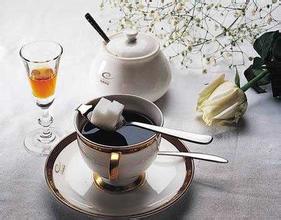A brief introduction to the flavor, taste and aroma characteristics of high-quality and delicious Bali boutique coffee beans

At first, Indonesian coffee was Arabica, and the Arabica manor was destroyed by a leaf rust disaster at the end of the 18th century. at first, the Dutch tried to grow Liberian seeds, and later, they began to plant Robsta seeds on a large scale.
At present, Arabica species account for about 10-15% of the coffee produced in Indonesia, and the rest is Robusta. Although Liberika species are produced, they are basically not included in the coffee trade.
Coffee harvest
There are usually two harvest seasons in Indonesia, the main harvest season (main crop) occurs from September to October, and the second harvest season (fly crop) occurs from May to June.
Arabica will be picked by hand, and workers who pick by hand will enjoy a minimum wage, on the basis of which there will be performance pay.
Brief introduction of Indonesian Coffee Indonesian Coffee (1)
Coffee treatment
Coffee from Java is traditionally washed.
Sumatra and Sulawesi are famous for their "wet planing" wet-hulled with Indonesian characteristics, known locally as Giling Basah.
The drying methods in coffee treatment vary according to the situation: high-priced bed drying in rain canopy, balcony drying, roadside drying and so on.
Bali coffee, known as "aristocratic coffee", is the most classic of French coffee culture. It is very popular both in France and in Europe and around the world. In particular, it is permeated with a strong aristocratic culture, and it is a favorite of coffee lovers.
The French court is the center of French political and cultural life, and the salon of upper-class society has been leading the mass culture and life style of France. The relaxed, elegant, romantic and colorful way of life of the royal aristocracy has affected the interest of the public. Cafes inherit some of the communicative functions of aristocratic salons in the social life of the common people, especially intellectuals.
Brand culture editor
Romantic Bali aristocratic Bali coffee
Bali Coffee is a tone, a harmony and a song. She is the beat of the waves on the coast of Kuta, the beat of Mozart drums and the chirping of aristocratic people in the cafe.
Bali is one of the most beautiful and distinctive tourist attractions in the world, with its unique natural scenery, ancient civilization and unique local folk art, beautiful beaches, exquisite handicrafts, graceful music and dance, it's almost a Shangri-La on earth.
Bali's most famous golden coffee grows at an altitude of 1500 meters, and enjoys the influence of golden coffee culture in Bali. While tasting the bitter, sweet, fragrant but not sour characteristics of golden coffee, it has a wonderful tropical island style. I have been calling for your next encounter.
Main coffee producing area
Java, the oldest producing area, continues its reputation from the glory days of Indonesian coffee in the 18th century. Java coffee is still reminiscent of high-quality delicacy, when the most famous blend is Java coffee with Yemeni mocha. In addition, Java also has a very famous old coffee Aged coffee, or monsoon coffee Monsooned coffee.
Sumatra, the most legendary producing area, well-known coffee logos include Mandheling Mantenin, Lintong Lintong and Gayo Mountain Gayusan.
Sulawesi Island, famous coffee includes Delaga Toraja.
In addition, Bali, Flores and Timor are also important producing areas.
Coffee planting mode
In the Dutch colonial era, coffee was mainly grown in large estates. After World War II, it experienced the process of nationalization and the movement of independence. Today, about 90% of the coffee produced in Indonesia is produced by small farmers.
Coffee variety
Important Notice :
前街咖啡 FrontStreet Coffee has moved to new addredd:
FrontStreet Coffee Address: 315,Donghua East Road,GuangZhou
Tel:020 38364473
- Prev

A brief introduction to the treatment method of grinding degree and baking degree of mellow and full-bodied coffee beans
The Alishan Mountains are uniquely located in the global coffee belt. Due to the high altitude and the temperature difference of more than 10 degrees between day and night, the coffee beans produced are of the best quality, with full grains, thick pulp, sweet and mellow taste, sweet, not astringent, not bitter, not sour, perfectly showing the delicacy of coffee, for the best quality, the most unique flavor, "Zhenggang" native flavor "Taiwan"
- Next

A brief introduction to the History and Culture of the Origin and Development of Bali Fine Coffee beans with aristocratic Culture
Some specific proteins to reduce the bitterness of coffee. The researchers say that the process of Kopi Luwak coffee beans passing through the intestines and stomach of civets is very similar to the wet processing of coffee during fermentation, in which lactic acid bacteria play a key role. In the international market, Luwak coffee has always been a veritable luxury. One of the main reasons is manufacturing.
Related
- Detailed explanation of Jadeite planting Land in Panamanian Jadeite Manor introduction to the grading system of Jadeite competitive bidding, Red bid, Green bid and Rose Summer
- Story of Coffee planting in Brenka region of Costa Rica Stonehenge Manor anaerobic heavy honey treatment of flavor mouth
- What's on the barrel of Blue Mountain Coffee beans?
- Can American coffee also pull flowers? How to use hot American style to pull out a good-looking pattern?
- Can you make a cold extract with coffee beans? What is the right proportion for cold-extracted coffee formula?
- Indonesian PWN Gold Mandrine Coffee Origin Features Flavor How to Chong? Mandolin coffee is American.
- A brief introduction to the flavor characteristics of Brazilian yellow bourbon coffee beans
- What is the effect of different water quality on the flavor of cold-extracted coffee? What kind of water is best for brewing coffee?
- Why do you think of Rose Summer whenever you mention Panamanian coffee?
- Introduction to the characteristics of authentic blue mountain coffee bean producing areas? What is the CIB Coffee Authority in Jamaica?

